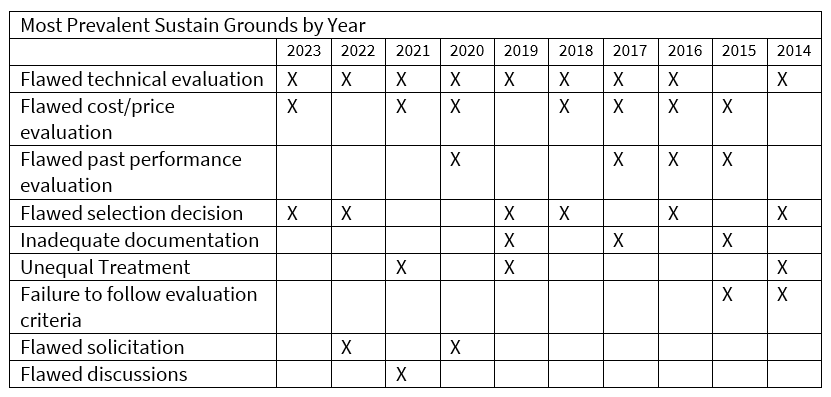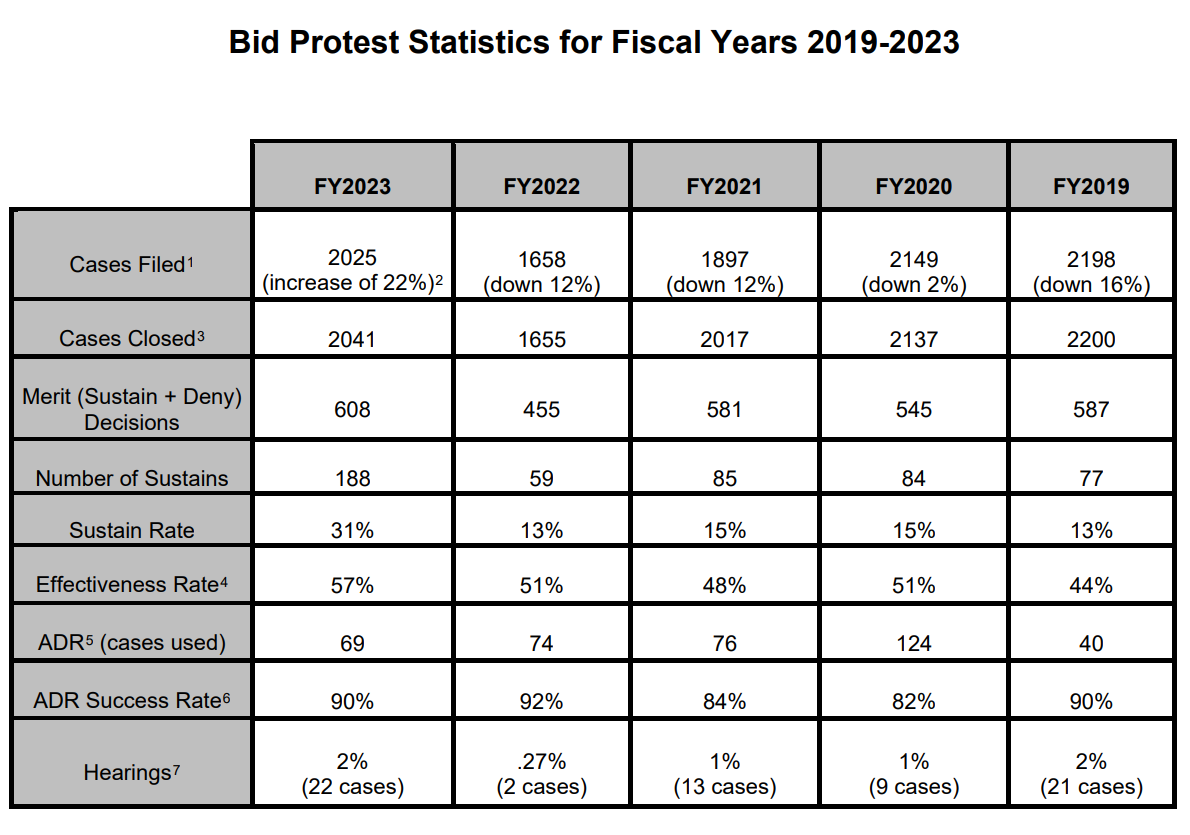GAO’s Bid Protest Sustain Rate Soars, but Is There a Catch?
Client Alert | 24 min read | 11.06.23
On October 26, 2023, the U.S. Government Accountability Office (GAO) released its Annual Report on Bid Protests for Fiscal Year 2023.
The total number of protests filed and the number of protests sustained by GAO increased significantly compared to Fiscal Year 2022—and GAO’s “Sustain Rate” jumped to 31%. GAO downplayed these increases to a degree, highlighting that it received “an unusually high number of protests challenging a single procurement”—the Department of Health and Human Services’ award of Chief Information Officer-Solutions and Partners 4 (CIO-SP4) government-wide acquisition contracts—which resulted in over 100 sustained protests. Nonetheless, even excluding the CIO-SP4 protests, it appears that GAO’s “Effectiveness Rate” (the percentage of cases in which the protester received relief, such as voluntary corrective action or a GAO sustain) was comparable to prior years—at or near 50%. Thus, bid protests remain an important oversight mechanism for the federal procurement system.
The most prevalent grounds upon which GAO sustained protests in FY 2023 were (1) unreasonable technical evaluations; (2) flawed selection decisions; and (3) unreasonable cost or price evaluations. The most prevalent grounds for sustained protests over the past ten years are detailed in the table below:

GAO’s full statistics for FY 2023 are shown below:

Contacts
Insights
Client Alert | 7 min read | 12.17.25
After hosting a series of workshops and issuing multiple rounds of materials, including enforcement notices, checklists, templates, and other guidance, the California Air Resources Board (CARB) has proposed regulations to implement the Climate Corporate Data Accountability Act (SB 253) and the Climate-Related Financial Risk Act (SB 261) (both as amended by SB 219), which require large U.S.-based businesses operating in California to disclose greenhouse gas (GHG) emissions and climate-related risks. CARB also published a Notice of Public Hearing and an Initial Statement of Reasons along with the proposed regulations. While CARB’s final rules were statutorily required to be promulgated by July 1, 2025, these are still just proposals. CARB’s proposed rules largely track earlier guidance regarding how CARB intends to define compliance obligations, exemptions, and key deadlines, and establish fee programs to fund regulatory operations.
Client Alert | 1 min read | 12.17.25
Client Alert | 7 min read | 12.17.25
Executive Order Tries to Thwart “Onerous” AI State Regulation, Calls for National Framework
Client Alert | 4 min read | 12.17.25
The new EU Bioeconomy Strategy: a regulatory framework in transition




